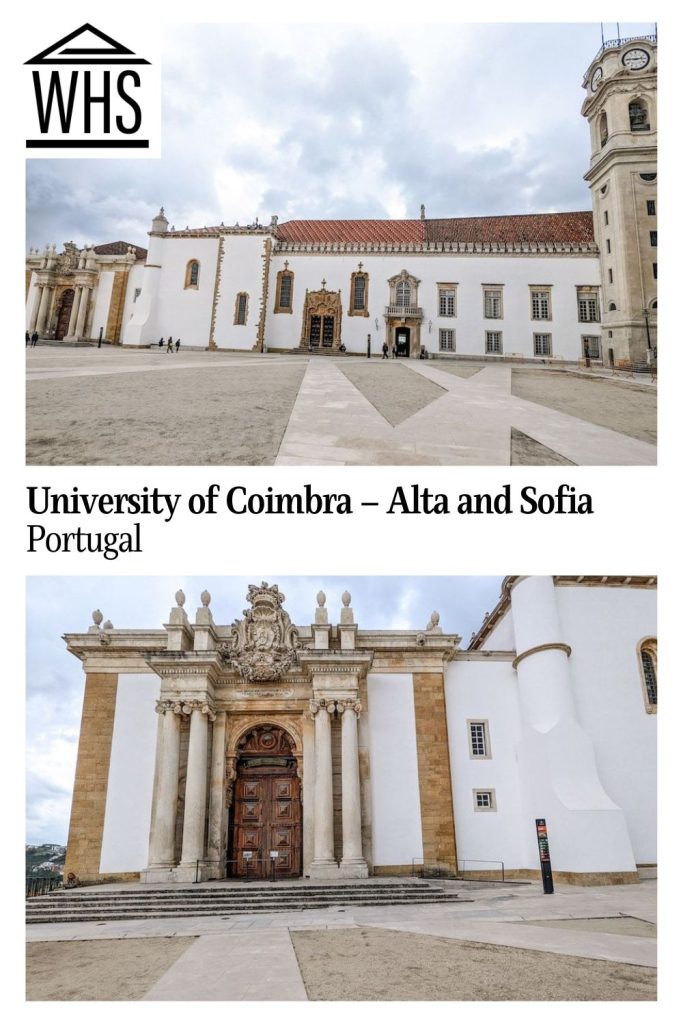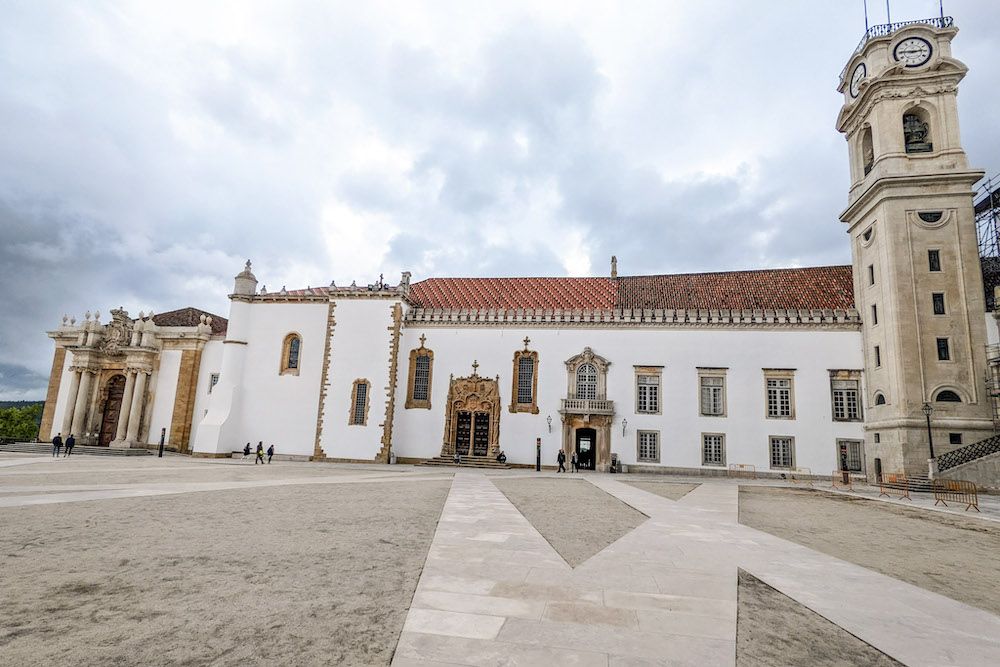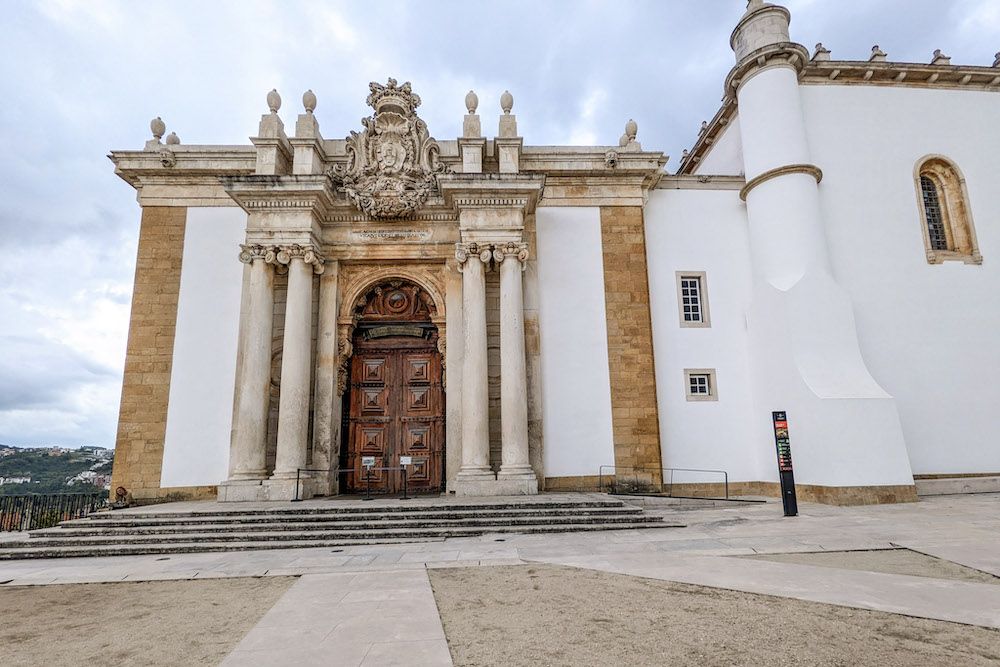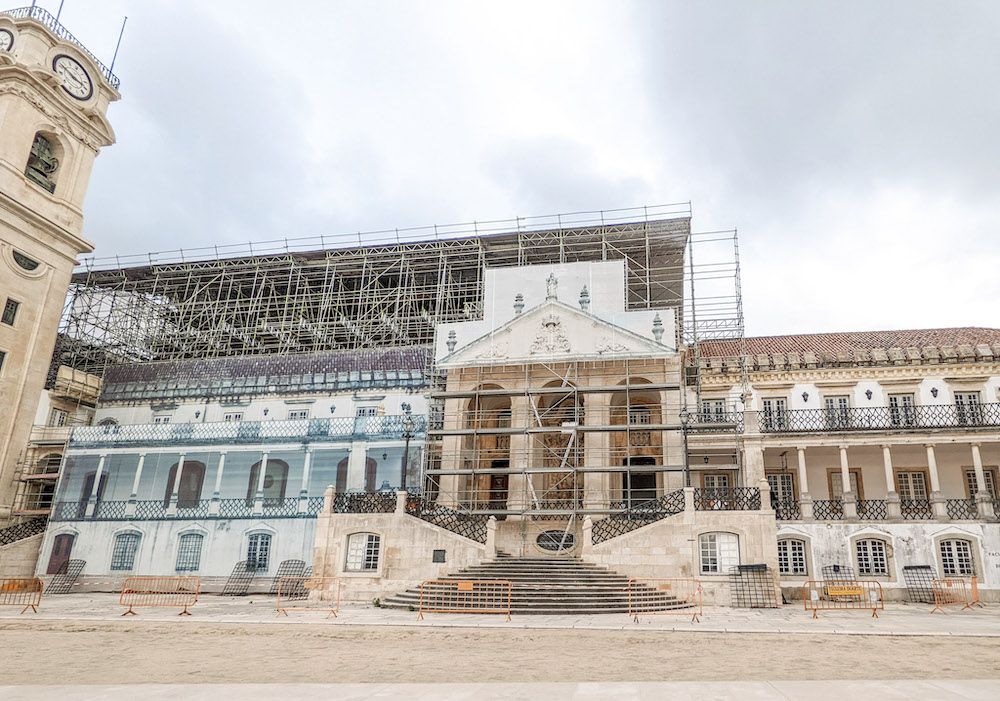University of Coimbra – Alta and Sofia
By Jami
What is the University of Coimbra – Alta and Sofia?
The University of Coimbra is the oldest educational institution in Portugal. The city of Coimbra dates back to the Roman Empire and is more or less halfway between Lisbon and Porto. The “Alta”, or high, part of the university is located on the top of the hill the Romans used for their fortress.
Disclosure: This article contains affiliate links. Making a purchase through an affiliate link will mean a small commission for this website. This will not affect your price.
The university’s buildings include a 12th-century cathedral, several 16th-century colleges, a former palace, a baroque library, and buildings added during the 1940s. Over the centuries, the university has become, to some extent, a city of its own within the larger city of Coimbra.

Why is the University of Coimbra-Alta and Sofia a UNESCO World Heritage site?
The University of Coimbra has a long history and a deep relationship with the city that make it a UNESCO-worthy site. The influence of the University of Coimbra can be seen throughout the Portuguese-speaking world. According to UNESCO, “Coimbra offers an outstanding example of an integrated university city with a specific urban typology as well as its own ceremonial and cultural traditions that have been kept alive through the ages.”
On top of the location and history, the university has held on to long-standing traditions like cloaks/gowns and houses. With all of the history, I felt like I was stepping back in time a bit as I walked around the campus.

What can you expect on a visit to Coimbra?
What you see on your trip to Coimbra depends on how much you plan. The sites are still controlled by an operating university so the options are more limited than other UNESCO sites.
The university is open daily from 9:00 am until 5:00 pm and you’ll need a ticket to visit.
Ticket sales open one month in advance and each ticket is €15. If you’d like to take a tour you can get one with a university student or take a private tour. Here are some of the highlights:
Original Roman Gate: You enter the main square of the university by walking under the original Roman gate into the city. It’s not well marked; if I hadn’t been navigating with my maps app I would’ve missed it for sure! Honestly, it’s not that photogenic but it’s really fun to know that you’re walking in a place with so much history.
Joanina Library: The Joanina Library is a large Gothic library that dates back to the 1700s. The massive library has 3 floors and 6,000 books. You can’t take pictures, which is a shame, but it’s an incredible place to visit!

Royal Palace: The Royal Palace dates to the 10th century and served as a royal residence until the 16th century, when the university moved here from Lisbon. There are three ornate halls, renovated in later centuries, as well as a lovely examination room, once used for oral exams.
Bell Tower: The bell tower dates back to the 1700s. This tower is unique because the bells are still used to signal the start and end of classes at the university.
Botanical Gardens: The university takes great pride in its gardens. You can wander them on your own for free during the opening hours. Or, if you want more details, take a guided tour of the gardens with a student guide. Make sure you look for this tour specifically since it’s different than the university tour.
There are other museums on the university campus including a science museum. You could easily spend all day bouncing around the campus if you wanted.
Consider a private guided walking tour around the university sights.
Is the University of Coimbra worth visiting?
The university is beautiful and the history runs deep. That said, it’s a wonderful stopover if you’re traveling between Lisbon and Porto, or if you happen to have extra time in one city. But I wouldn’t count it as a “must-visit” if you aren’t in the area already.
If you love libraries, though, it becomes a must-stop location! The Joanina library is the biggest draw here.

Tips for visiting the University of Coimbra
The university is at the top of the hill so wear comfortable shoes and bring water. It’s a hike up the hill and you’ll be humbled by the students who make it look easy. Rideshare apps are affordable in Portugal so don’t be afraid to take one to the top if you don’t want to walk it.
Plan and get tickets before you go. Otherwise, you may miss out on some of the main sites.
If you’re going to be in Lisbon before or after this visit, make sure to see the Monastery of the Hieronymites and Tower of Belém, which is also a UNESCO site. If you’ll be in Porto, see its UNESCO site: the Historic Centre of Oporto.
Where is the University of Coimbra?
The University of Coimbra is in the town of Coimbra about halfway between Porto and Lisbon. Its location makes it a great day trip from either city. If you’re ambitious, it’s also a good stopover point as you travel between the two cities.
Rent a car in Porto or Lisbon.
Find accommodations in Porto, Lisbon, or Coimbra.
By Car from Lisbon: The drive from Lisbon to Coimbra takes two hours and is an easy drive up the A1 highway. But note that Coimbra has roots in the Roman empire, so the streets are small and windy. Plus, parking can be difficult since the streets are made for little cars. It may be beneficial to park at the bottom of the hill and walk up to the university rather than navigating the little streets and trying to find parking.
By Train from Lisbon: A high-speed train connects Lisbon and Coimbra at roughly one train per hour. Catch the train from Santa Apolonia or Oriente. The 90-minute train ride to Coimbra-B Station costs about €35 one way. A different high-speed train connects Coimbra and Porto.
For more information about the University of Coimbra, its opening hours, and tours/admission fees, see the official website.
Have you been to Coimbra? If so, do you have any additional information or advice about this UNESCO World Heritage site? Please add your comments below!

